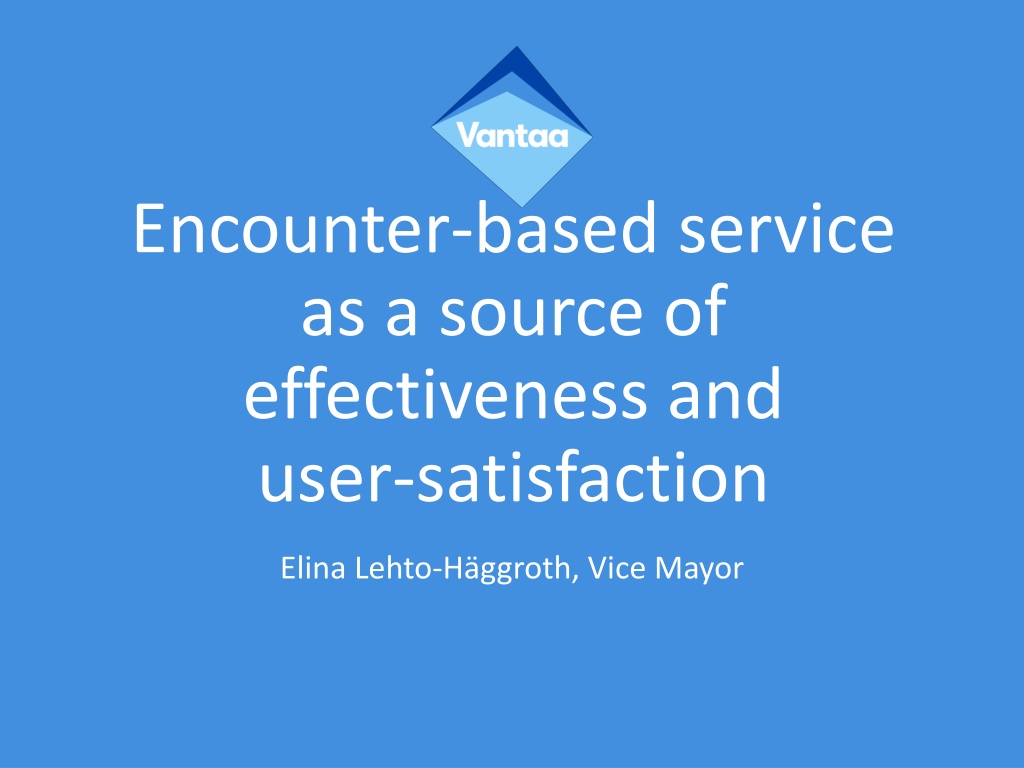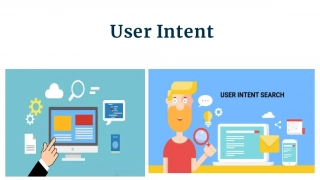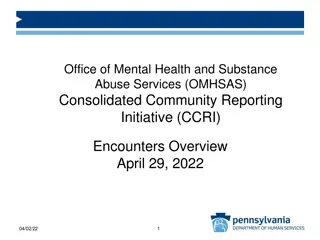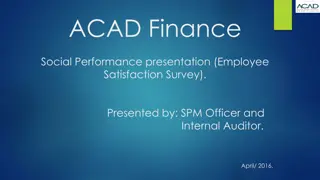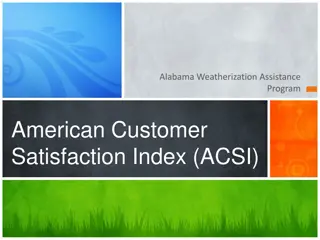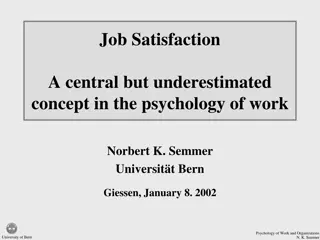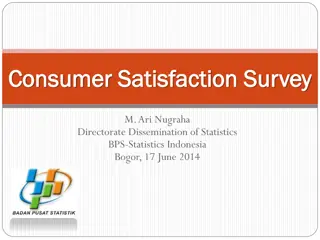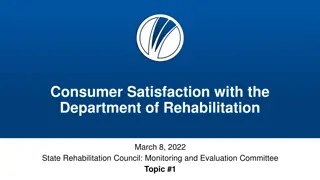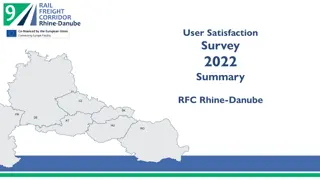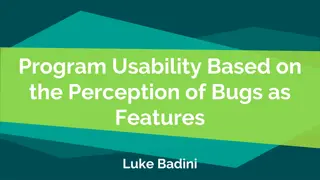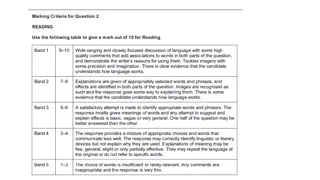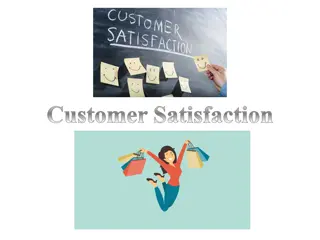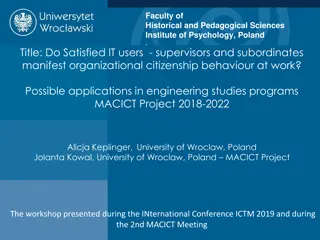Enhancing Effectiveness and User Satisfaction through Encounter-Based Services: A Case Study in Vantaa
Encounter-based services play a crucial role in improving effectiveness and user satisfaction in Vantaa, as highlighted by the use of the Common Assessment Framework (CAF) for self-assessment in budget processes. The city's innovative approaches include user-producer initiatives, partnerships with private providers, and new leadership strategies. These efforts aim to promote interaction with citizens, enhance service design, and increase organizational agility and flexibility. The cost analysis from 2009 to 2014 also shows a trend towards cost efficiency in operational services for children.
Download Presentation

Please find below an Image/Link to download the presentation.
The content on the website is provided AS IS for your information and personal use only. It may not be sold, licensed, or shared on other websites without obtaining consent from the author. Download presentation by click this link. If you encounter any issues during the download, it is possible that the publisher has removed the file from their server.
E N D
Presentation Transcript
Encounter-based service as a source of effectiveness and user-satisfaction Elina Lehto-H ggroth, Vice Mayor
CAF self-assessment in Vantaa is a Part of Budget Process Departments, result divisions and those profit centers that have their own budgets utilize the CAF (Common Assessment Framework) model in assessing and developing their operations, compile a description of their own operations, based on the CAF questions, at least once per council term. 2014: describing and assessing Partnerships and Resources, Processes, and Social Responsibility results 2015: describing and assessing Leadership, People and People results 2016: describing and assessing Strategy and Planning, Citizen/ Customer -oriented results, and Key Performance results The results of these assessments can also be utilized in compiling a description of the operating environment. In the year following the assessment, the committee's budget proposals will include the conclusions based on the assessment of how strategy and operations should be developed. 2
Encounter-based service as a source of effectiveness and user-satisfaction 1. Encounter-based innovation - Top down: day care - Bottom up: the yards of day care units and schools - Mixture: recommenders 2. User-producers - Self-service libraries - Schools and day care units: New Learning 3. Partnerships: - Private day care providers - Sports facilities - Art galleries and concerts 20.9.2024 3
(continued) 4. Integration - P hkin rinne library and youth premises - Finnish Schools on the Move - Child art pedagogues in early childhood education and care 5. Space Utilisation - Schools 20.9.2024 4
(continued) 6. New interaction and methods with citizens service design, e.g. Hakunila library co-planning and co-design transparency and openness in actions 7. New Leadership delegating and supporting the encounter level empowerment for innovation low organisation agility and flexibility 20.9.2024 5
Change of costs 2009-2014 - -operational costs/child using the service -o- deflated *) operational costs/child using service 11000 10500 10000 9505 9378 9306 9500 9028 8933 8955 9000 8874 8872 8500 8829 8663 8534 8000 7500 7000 2009 2010 2011 2012 2013 2014 *)Statistics Finland: Price index of public expenditure, the social sector 2005=100
Hakunila library Costs: A similar project in the Metropolitan Helsinki Area cost 440 000 euros. In Hakunila, the total costs were 130,000 euros, of which the City of Vantaa s share was 90,000 euros, the Ministry of Education and culture financed the project with 25,000 euros and the remaining 15,000 euros were donated by different companies. Making use of old materials; inclusion of the young; listening to the client; togetherness; increased use of the library; library granny and grandpa 20.9.2024 7
Conclusions Service innovations do not fit the conventional perceptions and definitions of industrial innovation. The interaction of service personnel with clients and service- users may lead to new knowledge and this can lead to innovations. The aim is that ideas/new practices are developed by front-line employees together with clients/citizens and are integrated in the organisation. (S rensen-Sundbo-Mattsson: Organisational conditions for service encouter- based innovation. Elsevier 2013) 20.9.2024 8
